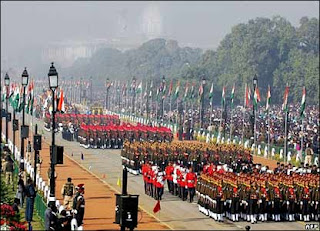
The highest mountain of the world.
Some of the highest mountains in the world are located in northern India. These are part of the Himalaya mountains. Being the world's highest mountain chain, the Himalayas is characterized by its great height, complex geologic structure, snowcapped peaks, large valley glaciers, deep river gorges, and rich vegetation.
| They were given the name Himalaya which means "home of snow", because snow never melts on their high peaks. The Himalayas form the planet's highest mountain region, containing 9 of the 10 highest peaks in the world. Among these peaks are the world's highest mountain, Mount Everest (8848 m), which is on the Nepal-Tibet border; the second highest peak, K2 or Mount Godwin Austen (8,611 m), located on the border between China and Jammu and Kashmir, the third highest peak, Kanchanjunga (8,598 m) on the Nepal-India border. |






